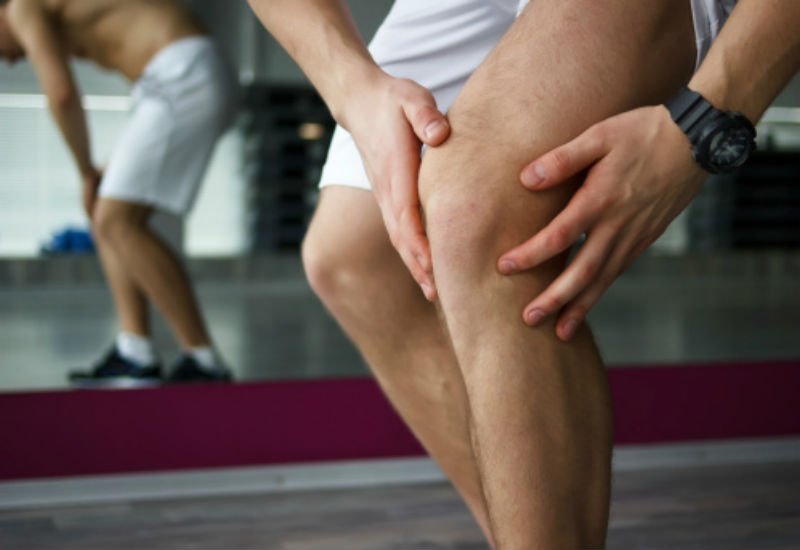
Knee injuries are extremely common. Most people have had at least one problem with their knees at some point in their life. When this happens, performing knee strengthening exercises after injury should be the first thing on your mind.
A majority of the time, knee injuries happen due to a sudden event such as a quick twist or jerk while exercising or participating in recreational activities. However, they can also happen over time with poor posture and improper movement patters.
Luckily though, by performing the proper exercises (as well as lower-body mobility and stretching) you can strengthen and regain mobility in the muscles surrounding your knee—providing not just pain relief, but lasting improvements to your posture and flexibility as well.
7 Knee Strengthening Exercises after Injury
The list of knee strengthening exercises after injury includes 7 different movements aimed at strengthening your quadriceps, hamstrings, adductors, abductors, calves, and other smaller connective tissues.
While performing all of them is important for a full recovery, the last exercise has been shown to specifically heal knee-related issues by itself, as reported in the National Institutes of Health.
For a more detailed explanation (with pictures) of the exercises, review our full knee pain treatment guide.
- Sitting leg raises
While sitting on the ground, place a towel underneath your knee so that your leg is raised slightly off of the ground. Next, slowly contract your quad so that your foot rises off of the ground. Hold for 3-5 seconds before returning slowly to the ground. Switch and perform the other leg, making sure to complete 10 repetitions for each.
- Sitting leg curls
While sitting on the ground with your legs straight in front of you, bring one knee up by sliding your foot back across the ground. Hold and contract for 3-5 seconds before returning to the starting position. Perform 10 repetitions before switching to the other leg.
- Isometric knee presses
While sitting down in a chair with both feet placed flat in front of you, raise one foot and place it behind the calf of your other leg. Next, while keeping your front foot planted, push against the back of your calf with your raised leg as hard as you can for 5 seconds. Repeat for a total of 6 to 8 repetitions on each leg. Work up to 4 to 6 sets for each leg over time.
- Chair squats
While sitting down in a chair, fold your arms in front of you. In a slow and controlled manner, stand up. Your goal should be to increase your repetitions with each session. To make the movement harder, you can perform them on the bottom two stairs or a lower chair.
- Stair step-ups
Stand at the bottom of a staircase with both feet flat on the ground. Step up and down the first step with your right leg; try to perform as many repetitions as you can within 60 seconds (with no pain). Switch and do the other leg. With each session, try to increase your amount of total reps.
- Calf raises
While standing next to a wall or railing to hold onto, raise your heels as high as you can and contract your calf muscles. Do not bounce when performing this knee strengthening exercise.
- Eccentric single-legged decline squats
In a remarkable study published in the National American Journal of Sports Physical Therapy, therapists found that one movement in particular was the perfect exercise to rehab with following injury: the eccentric single-legged squat. It is especially effective at treating tendonitis and other tendon-related knee problems.
To perform the exercise, first find a steep incline that you can still stand on comfortably. A box placed at an angle or even a board placed against a curb works great.
Now, perform a squat on one leg—your goal is to go down as slowly as possible. This is referred to as the “eccentric” part of the lift, or when you aren’t contracting and squeezing your muscles.
To make it easier or to avoid additional pain, once you reach the bottom, you can use your un-injured leg to squat back up. Make sure that your knees are tracking, or traveling directly over, your knees at all times.
As you get better over time, you can add a backpack or use your single leg to squat back up instead of using both legs.
It is recommended that you complete the above knee strengthening exercises after injury, and perform them 3-6 days per week. By using the lower-body mobility routine alongside the outlined exercises, you will also regain mobility and flexibility in your legs—restoring balance while providing pain relief to go with the strengthening benefits.
